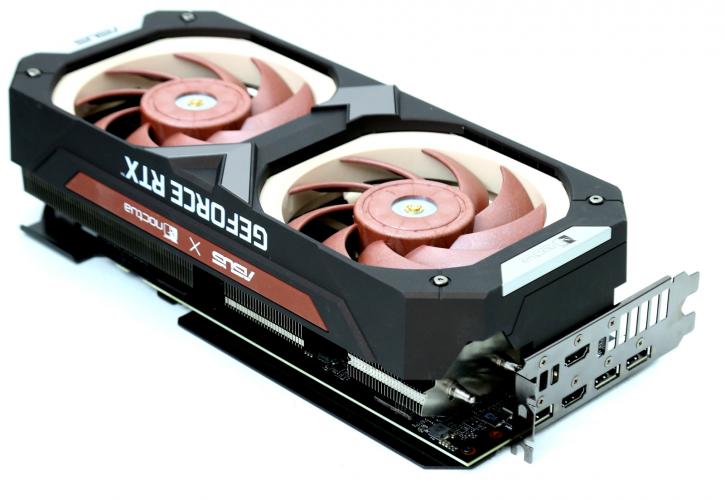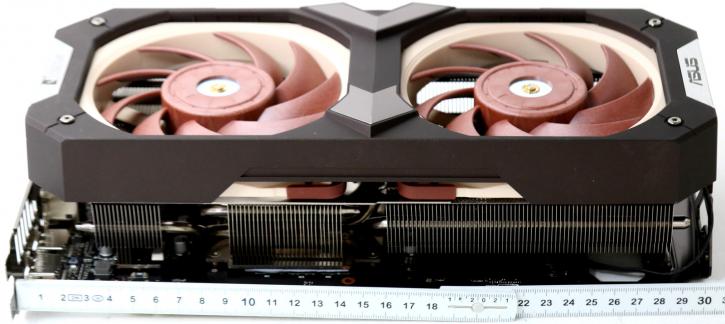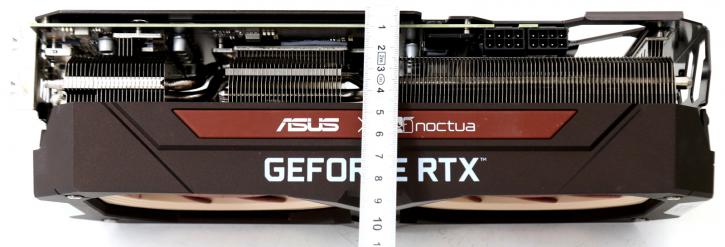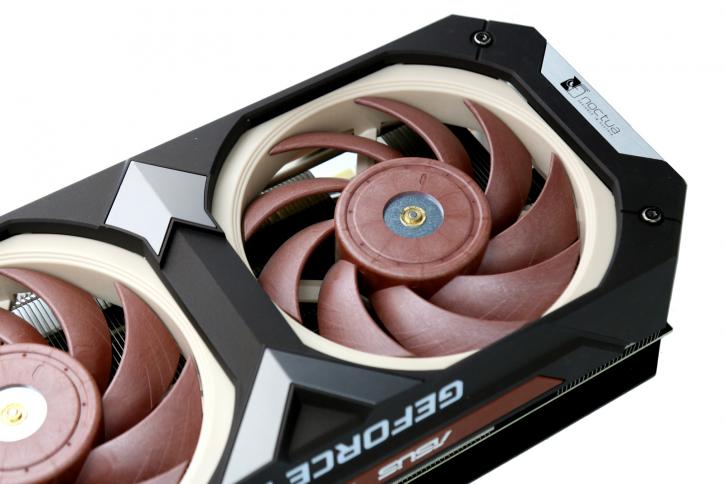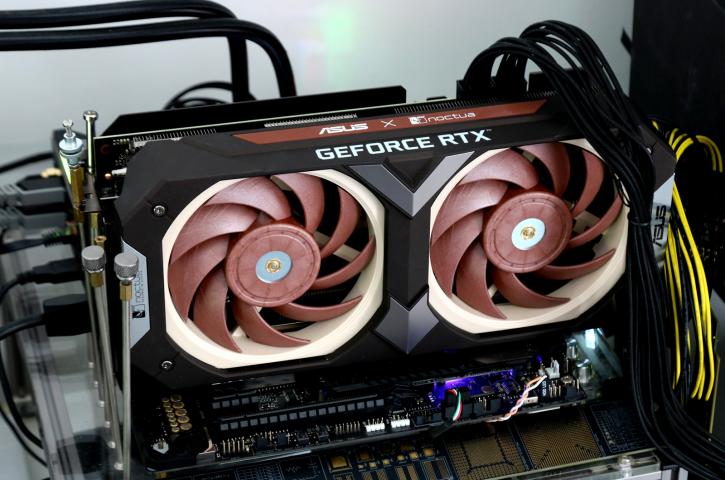Product Photos
Product Photos
The Ampere series replaces the Turing lineup, which will fade out of the market as these cards sit right on top of their prices yet are much faster.
- The reference 3060 cards have a peak boost clock up-to 1.78 GHz, with the base clock hovering in the 1.32GHz domain.
- The reference 3060 Ti cards have a peak boost clock up-to 1.66 GHz, with the base clock hovering in the 1.41 GHz domain.
- The reference 3070 cards have a peak boost clock up-to 1.73 GHz, with the base clock hovering in the 1.50 GHz domain.
- The reference 3080 cards have a peak boost clock up-to 1.71 GHz, with the base clock hovering in the 1.44 GHz domain.
- The reference 3090 cards have a peak boost clock up-to 1.70 GHz, with the base clock hovering in the 1.40 GHz domain.
As previously stated, it weighs around 1.6 kilogram and has 4.3slots throughout its length of 31cm. As standard equipment, each SKU comes with a backplate for protection and aesthetic purposes.
Noctua uses a single heatsink to cover all of the parts that are running hot. The heatsink splits into three areas, all connected by four heatpipes. Thermal insulation material is used to connect parts of the heatsink to the VRMs and memory modules. Even though Asus doesn't give exact numbers, this method should be able to cool 250W TGP with ease.
This is a 4.3-slot graphics card that is 310mm long, 147mm high, and 87.5mm thick. Weight is also something to keep in mind, as the sample weighs close to 1,570g.
In this case, Noctua built a custom cover to hold two 120mm PWM fans in a beige and cream color scheme. People may be disenchanted by the colors and lack of RGB in the shroud, but it's built well. I think Noctua might be able to make more cards with the chromax.black color scheme. Bit again, Noctua's signature color is that beige/brown, so we understand the choices made.
There are a few of small drawbacks to having an exposed heatsink design. The majority of the heat removed by the card will be recirculated in the chassis, and it doesn't look as clean from either side as a Founders Edition model.

